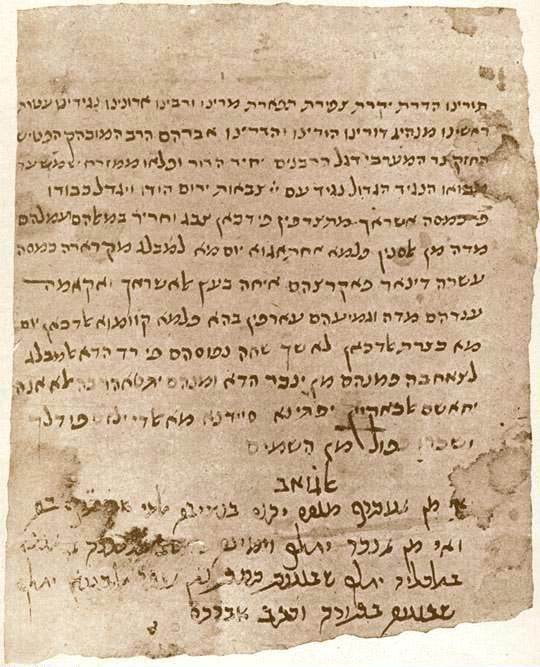Writing system Hebrew alphabet Glottolog None | ISO 639-2 jrb | |
 | ||
Native speakers (ca. 540,000 cited 1992–1995) Language family Afro-Asiatic
Semitic
Central Semitic
Arabic
Judeo-Arabic ISO 639-3 jrb – inclusive code
Individual codes:
yhd – Judeo-Iraqi Arabic
aju – Judeo-Moroccan Arabic
yud – Judeo-Tripolitanian Arabic
ajt – Judeo-Tunisian Arabic
jye – Judeo-Yemeni Arabic | ||
The Judeo-Arabic languages (Arabic: عربية يهودية, Hebrew: ערבית יהודית) are a continuum of varieties of Arabic spoken by Jews living or formerly living in the Arab world; the term also refers more or less to Classical Arabic written in the Hebrew script, particularly in the Middle Ages. Just as with the rest of the Arab world, Jews had different dialects depending on where they lived. This phenomenon may be compared to cases such as Yiddish dialects or forms of Judaeo-Spanish (Ladino) in areas such as the Balkans, Thessaloniki-Istanbul, Morocco, etc.
Contents
Many significant Jewish works, including a number of religious writings by Maimonides and Judah Halevi, were originally written in Judeo-Arabic as this was the primary colloquial language of their authors.
Characteristics
The Arabic spoken by Jewish communities in the Arab world differed slightly from the Arabic of their non-Jewish neighbours. These differences were partly due to the incorporation of some words from Hebrew and other languages and partly geographical, in a way that may reflect a history of migration. For example, the Judeo-Arabic of Egypt, including in the Cairo community, resembled the dialect of Alexandria rather than that of Cairo (Blau). Similarly, Baghdad Jewish Arabic is reminiscent of the dialect of Mosul. Many Jews in Arab countries were bilingual in Judeo-Arabic and the local dialect of the Muslim majority.
Like other Jewish languages and dialects, Judeo-Arabic languages contain borrowings from Hebrew and Aramaic. This feature is less marked in translations of the Bible, as the authors clearly took the view that the business of a translator is to translate.
History
Jews in Muslim countries wrote—sometimes in their dialects, sometimes in a more classical style—in a mildly adapted Hebrew alphabet rather than using the Arabic script, often including consonant dots from the Arabic alphabet to accommodate phonemes that did not exist in the Hebrew alphabet.
Some of the most important books of medieval Jewish thought were originally written in medieval Judeo-Arabic, as well as certain halakhic works and biblical commentaries. Later they were translated into medieval Hebrew so that they could be read by contemporaries elsewhere in the Jewish world, and by others who were literate in Hebrew. These include:
Most communities also had a traditional translation of the Bible into Judeo-Arabic, known as a sharḥ ("meaning"): for more detail, see Bible translations into Arabic. The term sharḥ sometimes came to mean "Judeo-Arabic" in the same way that "Targum" was sometimes used to mean the Aramaic language.
Present day
In the years following the 1948 Arab–Israeli War, the end of the Algerian War, and Moroccan and Tunisian independence, most Mizrahi and Sephardi Jews in Arab countries left for mainly France and Israel. Their distinct Arabic dialects in turn did not thrive in either country, and most of their descendants now speak French or Modern Israeli Hebrew almost exclusively; thus resulting in the entire continuum of Judeo-Arabic dialects being considered endangered languages. This stands in stark contrast with the historical status of Judeo-Arabic: in the early Middle Ages, speakers of Judeo-Arabic far outnumbered the speakers of Yiddish. There remain small populations of speakers in Algeria, Morocco, Tunisia, Lebanon, Yemen, Israel and the United States.
